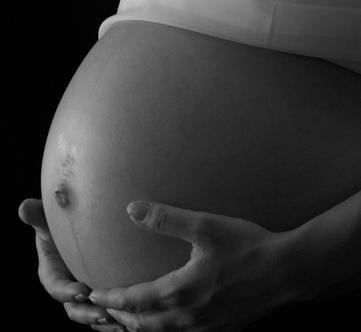Nine months might seem like a long time to wait for a baby to be born. When you consider, however, all the changes an egg undergoes from fertilization until the end of the third trimester, nine months really isn’t too long to wait. As described by Dr. Carolyn Jacob on the Family Doctor website, pregnancy begins at fertilization and is broken down into three trimesters; each trimester lasts roughly three months.
Fertilization
A baby’s development begins at fertilization when the fertilized egg, called a zygote, travels down the fallopian tube and into the uterus. At this time, the zygote divides to form a cluster of cells called a blastocyst. Approximately 10 days after fertilization, the blastocyst attaches to the lining of the uterus. There, the cells further divide to form the placenta and embryo.
First Trimester
Between the fifth and 10th week of gestation, the embryo undergoes a period of rapid change called embryonic development. Amazingly, embryonic stem cells divide to form every major organ and body part. The placenta matures and begins to deliver oxygen and nutrients from the mother to the embryo, as well as remove waste products. Likewise, the amniotic sac forms to surround and protect the developing embryo. At the 11th week of gestation, the embryo enters the fetal stage of development. Though all the organs are formed, the brain and spinal cord continue to mature throughout the duration of the pregnancy. By the end of the first trimester, the fetus is approximately 3 inches long.
Second Trimester
The mom-to-be might find that the fun of being pregnant begins during the second trimester. Her expanding belly and the fetal movements give evidence of the growing baby inside her, and she might even discover the baby’s sex through an ultrasound. Early in the second trimester, many of the baby’s organs are fully functioning. Skeletal bones and muscles begin to form and can be seen through ultrasound. As the trimester progresses, nerves start to transmit impulses to the baby’s brain, allowing her to hear the mother’s heartbeat or startle at loud noises. Her facial features are now more defined, and she can even make sucking motions with her mouth. The lungs, liver and immune system still have developing to do and will continue to mature. By the end of the second semester, the baby will have tripled in size since the end of the first trimester.
Third Trimester
During the last trimester of pregnancy, the baby is really starting to move and stretch. Her senses are in full bloom, too. In addition to being able to hear the mother’s heartbeat, the baby can now open and close her eyes and even sense light. Taste buds have formed, so she can distinguish between sweet and sour. Mom might notice rhythmic belly movements from time to time, which is the baby hiccupping. As the pregnancy comes to an end, the baby gains an average of 8 oz. per week. Her lungs fully mature to allow her to breathe after delivery, and she will assume a head-down position to pass through the birth canal. By the end of the third trimester, the baby is 20 inches long and 6 to 9 lbs.
Photo Credit
- Waiting image by Kristin Skipper from Fotolia.com





